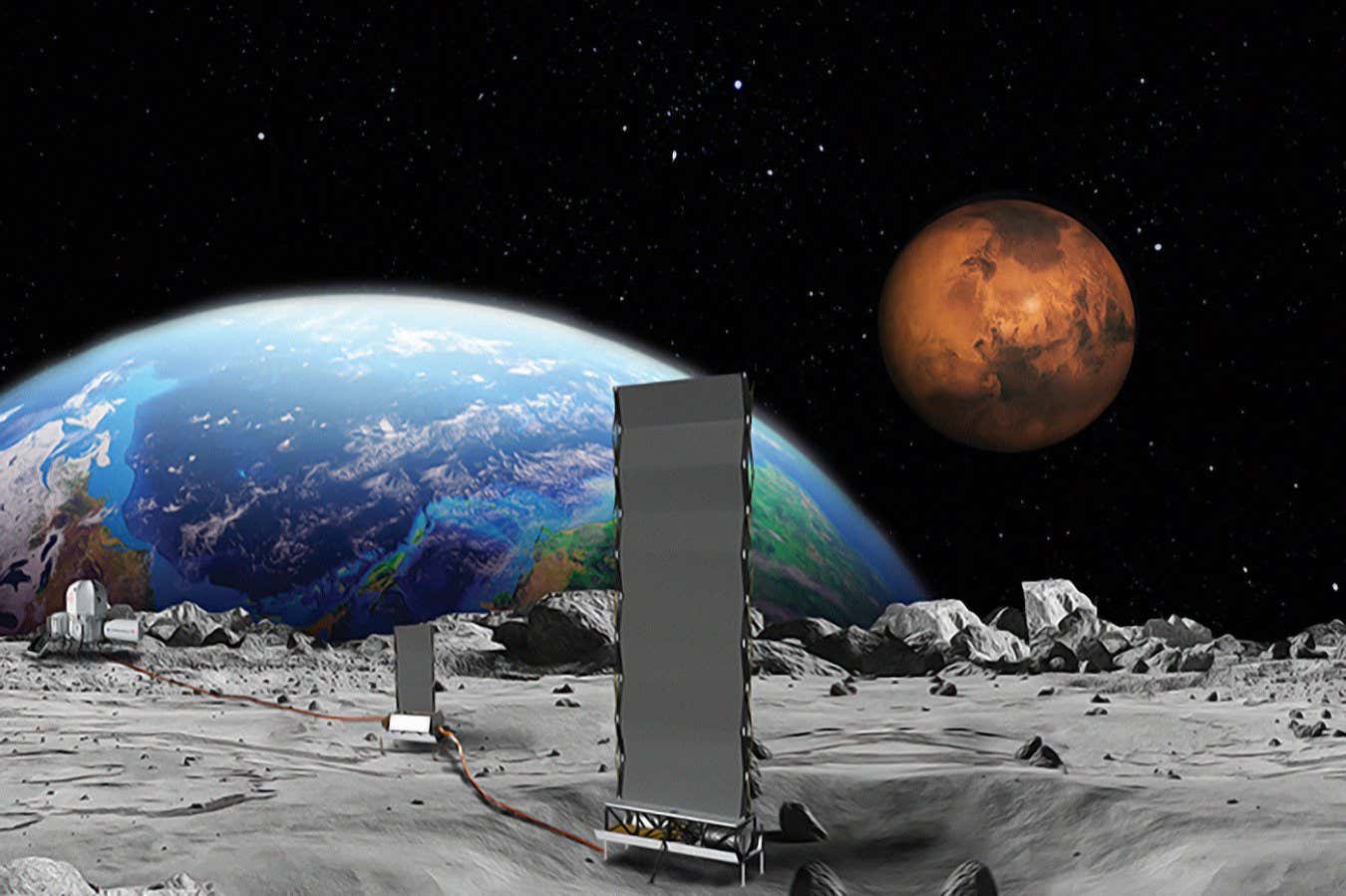Science
NASA Plans Lunar Nuclear Reactor by Mid-2030s to Compete Globally

NASA has announced plans to construct a nuclear reactor on the moon by the mid-2030s, as outlined by the agency’s acting administrator, Sean Duffy. This initiative aims to enhance the United States’ presence in space amid growing competition from international counterparts. While the concept of a lunar reactor is not new—NASA awarded contracts in 2022 to three companies for designing smaller reactors—this new directive emphasizes a more ambitious and accelerated approach.
The proposed lunar reactor is expected to generate at least 100 kilowatts of electrical power. Although this amount is relatively modest, sufficient to power around 80 homes in the United States, the specific applications for this energy remain uncertain. The primary envisioned use would support a long-term human settlement on the moon. However, significant challenges loom over this goal, especially within the context of NASA’s ongoing Artemis program, which aims for a moon landing in 2027. Many components of the mission still require testing, raising doubts about whether the timeline can be met.
Adding to the complexity is the recent reduction in NASA’s workforce, with approximately 20 percent of employees having exited as part of a deferred resignation program initiated under the previous administration. Concurrently, NASA’s budget may face cuts of up to 24 percent, which threatens the viability of numerous planned missions and the operational capabilities of existing spacecraft. These financial constraints prompt critical questions about the feasibility of establishing a nuclear reactor on the moon.
Duffy’s directive highlights the urgency of the project in light of international developments. Since March 2024, both China and Russia have publicly revealed their ambitions to deploy a nuclear reactor on the moon by the same mid-2030s timeframe. Duffy stated that the first nation to successfully establish such a reactor could potentially assert a “keep-out zone,” which would hinder the United States’ aspirations for lunar exploration.
Currently, no international laws govern the establishment of “keep-out zones” on the moon. The Outer Space Treaty of 1967 emphasizes the importance of mutual respect among nations conducting space operations and prohibits any claims of sovereignty over celestial bodies. While the more recent Artemis Accords mention “safety zones,” both China and Russia have not signed these accords, complicating the legal landscape further.
Despite the contentious nature of these territorial claims, Duffy has articulated ambitions for the United States to secure advantageous lunar regions, particularly around the moon’s south pole, known for its potential water ice and sunlight. “We want to get there first and claim that for America,” Duffy remarked during a press conference on August 5. Yet, legal interpretations regarding the United States claiming territory on the moon remain debatable.
As NASA pushes forward with its plans for a lunar nuclear reactor, it raises fundamental questions about the project’s purpose and strategic value. What tangible benefits would arise from establishing a reactor on the moon at this juncture? At present, there is no clear consensus on the rationale behind this ambitious endeavor, leaving the future of lunar nuclear power shrouded in uncertainty. The intersection of scientific aspirations and geopolitical maneuvering will likely define NASA’s trajectory in the coming years, as it endeavors to maintain its leadership in space exploration.
-

 Technology5 months ago
Technology5 months agoDiscover the Top 10 Calorie Counting Apps of 2025
-

 Technology3 weeks ago
Technology3 weeks agoOpenAI to Implement Age Verification for ChatGPT by December 2025
-

 Health3 months ago
Health3 months agoBella Hadid Shares Health Update After Treatment for Lyme Disease
-

 Health3 months ago
Health3 months agoAnalysts Project Stronger Growth for Apple’s iPhone 17 Lineup
-

 Health3 months ago
Health3 months agoErin Bates Shares Recovery Update Following Sepsis Complications
-

 Technology5 months ago
Technology5 months agoDiscover How to Reverse Image Search Using ChatGPT Effortlessly
-

 Technology3 months ago
Technology3 months agoElectric Moto Influencer Surronster Arrested in Tijuana
-

 Technology2 months ago
Technology2 months agoDiscover 2025’s Top GPUs for Exceptional 4K Gaming Performance
-

 Technology5 months ago
Technology5 months agoMeta Initiates $60B AI Data Center Expansion, Starting in Ohio
-

 Technology5 months ago
Technology5 months agoRecovering a Suspended TikTok Account: A Step-by-Step Guide
-

 Health5 months ago
Health5 months agoTested: Rab Firewall Mountain Jacket Survives Harsh Conditions
-

 Lifestyle5 months ago
Lifestyle5 months agoBelton Family Reunites After Daughter Survives Hill Country Floods




















